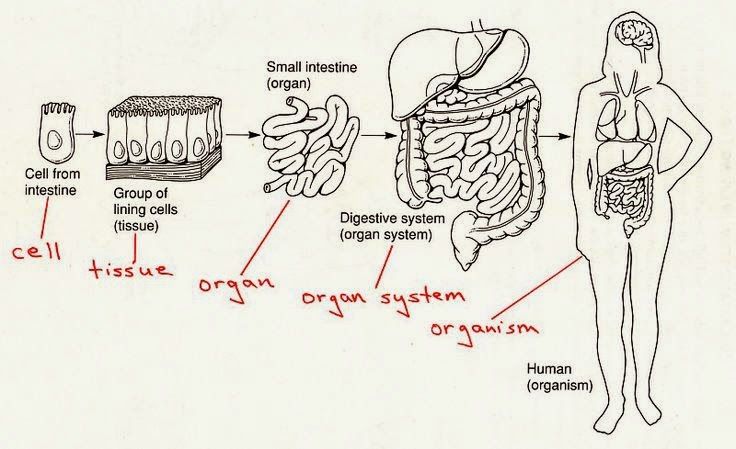The human body is the structure of a human beingIt is composed of many different types of cells that together create tissues and subsequently organ systemsThey ensure homeostasis and the viability of the human body. Organs form tissues which form organ systems.

Believing Is Our Superpower Organ System Teaching Cells Human Body Systems
103 Human Organ Systems.

. An individual with a relationship with the donor eg caretaker friend partner a member of the donors household or the donors primary physician. Figure 188 below shows the eleven distinct organ systems in the human body. Organs are made up of tissues.
The lymphatic system is a series of vessels ducts and trunks that remove interstitial fluid from the tissues and return it to the blood. Introduction to the Lymphatic and Immune Systems. The lymphatic vessels are also used to transport dietary lipids and cells of the immune systemCells of the immune system lymphocytes all come from the hematopoietic system of.
It is recommended that the interview take place in person or by telephone. An organ system is a group of organs that work together to perform major functions or meet physiological needs of the body. Classification of Epithelial Tissues.
They can only be obtained from the diet. Tissue engineering is distinguished from cell biology by the focus on the emergent function that arises from the organization of large numbers of cells into higher-order structures variously called tissues or organs depending on the level of anatomical complexity and structural integration. Pressure differences within the system cause the movement of the blood and are created by the pumping of the.
Examples of HCTPs include but are not limited to bone ligament skin dura mater heart valve cornea hematopoietic stemprogenitor cells. Tissues contain one or more organs. There is a quantitative relationship between nutrients.
The medium for transport of gases and other molecules is the blood which continually circulates through the system. Iron for hemoglobin iodine for thyroxin calcium for bones and sodium nerve message transmission are examples of minerals. The resulting blood flow is sluggish.
The study of the human body involves anatomy. The lymphatic system is a series of vessels ducts and trunks that remove interstitial fluid from the tissues and return it the blood. Tissue engineering is a biomedical engineering discipline that uses a combination of cells engineering materials methods and suitable biochemical and physicochemical factors to restore maintain improve or replace different types of biological tissues.
Blood is pumped by a heart into the body cavities where tissues are surrounded by the blood. Which of the following statements describe how tissues organs and organ systems are related. This extensive network supplies the cells tissues and organs with oxygen and nutrients and removes carbon dioxide and waste compounds.
It comprises a head neck trunk which includes the thorax and abdomen arms and hands legs and feet. As matter and energy flow through different organizational levelscells tissues organs organisms populations communities and ecosystemsof living systems chemical elements are recombined in different ways to form different products. The reengineering of complex human anatomical structures such as limbs or organ.
Tissue engineering often involves the use of cells placed on tissue scaffolds in the formation of new viable tissue for a. Organs are enclosed by tissues. Epithelial tissues are classified according to the shape of the cells composing the tissue and by the number of cell layers present in the tissue.
Assigning organs to organ systems can be imprecise since organs that belong to one system can also have functions integral to another system. Organs develop into tissues. Cells tissues and organs that are the subject of clinical trials under Division 5 of Part C of the Food and Drug Regulations.
These junctions thus allow electrical and metabolic coupling of adjacent cells. Open circulatory systems evolved in insects mollusks and other invertebrates pump blood into a hemocoel with the blood diffusing back to the circulatory system between cells. Representative digestive systems are shown in Figure 1.
As components of cells and tissues and for nerve conduction and muscle contraction. 16What is the relationship between tissues and organs. Introduction to the Lymphatic and Immune Systems.
Figure 422 Cell shapes are classified as being either squamous flattened and thin cuboidal boxy as wide as it is tall or. The result of these chemical reactions is that energy is transferred from one system of interacting molecules to another. The lymphatic vessels are also used to transport dietary lipids and cells of the immune systemCells of the immune system lymphocytes all come from the hematopoietic system of the bone.
D Human cells tissues or cellular or tissue-based products HCTPs means articles containing or consisting of human cells or tissues that are intended for implantation transplantation infusion or transfer into a human recipient.

Cells Tissues Organs Organ Systems Worksheet Cells And Tissues Levels Of Organization Biology Organ System

Ch1 1 Cells Tissue Organ Organ Systems Organism Same Images As Used In Mcgrawhill Gr 5 Science Textbook Science Textbook Organ System Textbook

Cells Tissues Organs Organ Systems Life Functions Package Teaching Cells Organ System Cells And Tissues
0 Comments